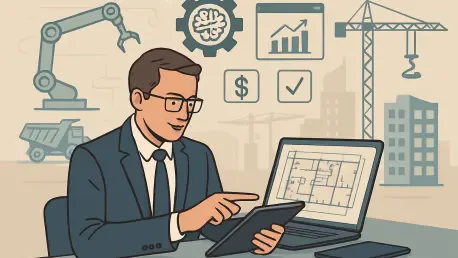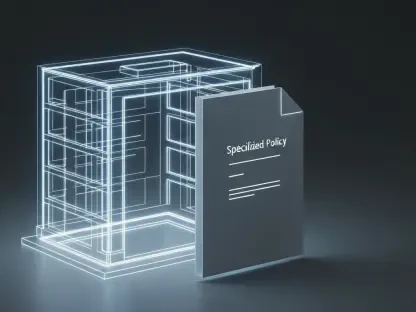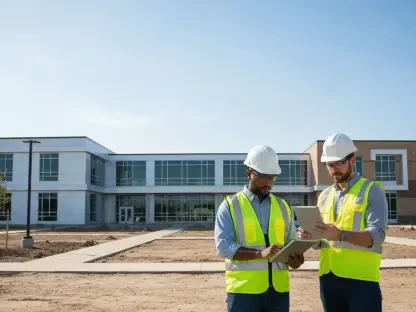I’m thrilled to sit down with Luca Calaraili, a renowned expert in construction with a deep background in design and architecture. Luca’s passion for integrating cutting-edge technology into the industry has made him a leading voice in exploring how innovations like AI can revolutionize construction processes. Today, we’re diving into the transformative potential of AI-powered tools in procurement, often referred to as Procurement 5.0. We’ll discuss the pressing challenges facing construction supply chains in the UK, the tangible benefits AI can bring, the practical steps for implementation, and a glimpse into the future of this evolving field. Let’s get started!
How would you describe the most significant procurement challenges facing UK construction companies today?
I think one of the biggest hurdles is the lack of clear visibility across supplier networks. Many companies juggle hundreds of suppliers without a unified system to track performance or pricing, which often leads to missed opportunities or duplicated efforts. Then there’s the issue of budget overruns—studies show projects often exceed budgets by nearly 50%, and supply chain inefficiencies are a huge driver of that. Slow decision-making, often due to scattered data or manual processes, and increasing compliance demands around sustainability and ethical sourcing, just pile on the pressure. It’s a complex web that directly hits project timelines and profitability.
Can you share a real-world example from your experience where supply chain issues led to significant budget overruns?
Absolutely. A few years back, I was involved in a mid-sized commercial project where we faced delays in sourcing specific steel components due to poor communication with a key supplier. We didn’t have a centralized tracking system, so no one flagged the delay until it was too late. The ripple effect was brutal—construction halted for weeks, labor costs soared with idle crews, and we ended up paying rush fees to expedite alternative materials. The budget ballooned by over 30%, and it was a harsh lesson in how critical supplier visibility and proactive planning are.
What’s your perspective on how AI-powered tools can reshape procurement in the construction industry?
AI has the potential to be a game-changer. Tools powered by AI, like intelligent document processing or demand forecasting, can streamline workflows dramatically. Imagine software that reads engineering drawings and instantly pulls specs into procurement orders—that cuts out hours of manual data entry. Beyond that, AI can predict material needs, evaluate suppliers in real time, and even flag risks before they spiral. It’s about moving from reactive firefighting to proactive, data-driven decisions, which could save time, reduce costs, and boost overall project reliability.
Have you seen AI tools in action for procurement, and if so, what kind of impact did they have?
Yes, I’ve worked with a team that piloted an AI tool for supplier evaluation on a recent project. It analyzed historical performance data and market trends to score suppliers, helping us pick the most reliable ones for critical materials. The result was a noticeable drop in delivery delays—about 15% fewer hiccups compared to previous projects. It also freed up staff to focus on negotiating better terms rather than chasing updates. It wasn’t perfect; we had to tweak the system to fit our specific needs, but the early wins showed me how much potential there is.
How do you think AI-driven shorter cycle times could improve project deadlines?
Shorter cycle times are a lifeline for staying on schedule. AI can slash the time it takes to process orders or get materials on-site by automating repetitive steps and optimizing inventory. For instance, if AI forecasts demand and pre-aligns suppliers, you’re not waiting weeks for approvals or deliveries. That could mean the difference between finishing a phase on time or facing costly delays. McKinsey’s research backs this up, showing AI can cut inventory by 20-30%, which directly translates to faster project timelines and happier clients.
Where would you begin if you were to integrate AI into your procurement process, and what issues would you prioritize?
I’d start by pinpointing the most painful bottlenecks. For many, that’s manual data handling—like extracting specs from blueprints or tracking supplier performance. I’d focus on a tool that automates those tasks first, because they eat up so much time and are prone to errors. Starting small with something like optical character recognition for drawings would be a low-risk way to test the waters, solve a real problem, and build confidence in the tech before tackling bigger areas like full supply chain forecasting.
How critical is it to ensure AI tools work seamlessly with existing systems like ERP platforms?
It’s absolutely essential. If AI tools don’t integrate with your current systems, you’re just creating more work—double data entry, mismatched records, and frustrated teams. Seamless connection with ERP or procurement platforms means data flows automatically, so you’re not stuck reconciling numbers manually. I’ve seen projects where lack of integration led to more headaches than the tech solved. Getting this right from the start ensures efficiency and keeps everyone on the same page.
What kind of training do you think teams need to effectively adopt AI tools in procurement?
Training is key, but it doesn’t have to be overwhelming. Teams need a solid grasp of how to interpret AI outputs—like understanding a supplier risk score or adjusting a demand forecast. It’s also about managing the tools, not just using them, so learning how to tweak settings or troubleshoot basic issues is important. I’d advocate for hands-on workshops over generic tutorials, paired with ongoing support during the early rollout. It’s less about tech expertise and more about building comfort with a new way of working.
Looking ahead, how do you envision the future of procurement in construction over the next few years?
I see procurement shifting from a reactive, transactional role to a strategic, data-driven one. AI agents will likely take on more autonomy—think managing supplier onboarding or spotting risks without constant oversight. We’ll also see tighter links between procurement and project planning, maybe through digital twins that adjust material orders in real time as designs evolve. Sustainability will become non-negotiable, with environmental data baked into every supplier decision. It’s an exciting pivot toward efficiency and accountability, and companies that adapt early will have a real edge.
What’s your forecast for the role of AI in construction procurement over the next decade?
I’m optimistic that AI will become the backbone of procurement, not just a fancy add-on. Over the next ten years, I expect AI agents to handle complex tasks end-to-end—from negotiating with suppliers to predicting market shifts that affect material costs. The integration of technologies like blockchain for contract transparency and real-time digital twins for project alignment will amplify AI’s impact. It’ll be about creating resilient, adaptive supply chains that can weather disruptions. My forecast is that firms embracing this now will not only cut costs but redefine how trust and efficiency are built into every project.









